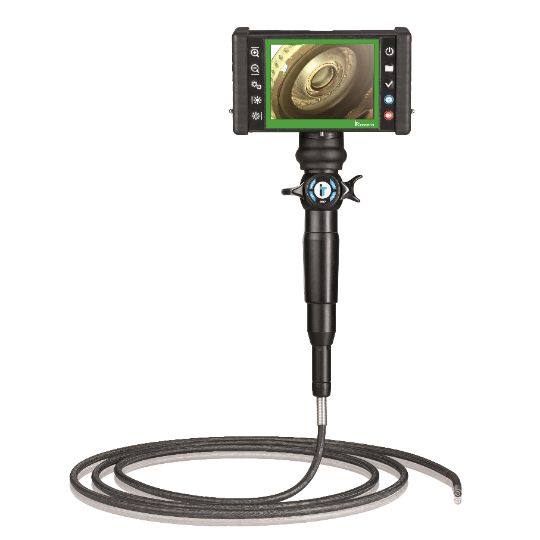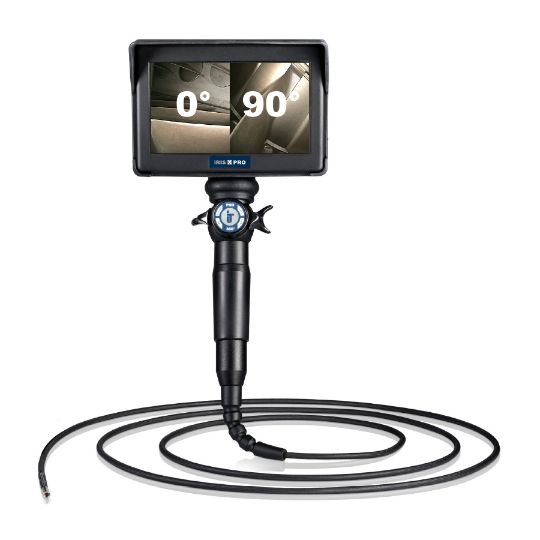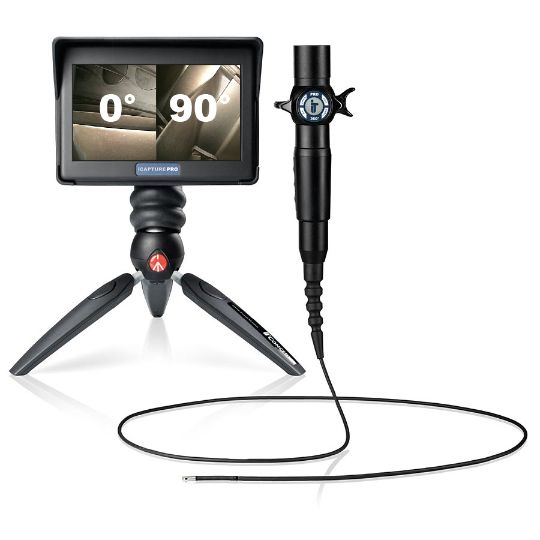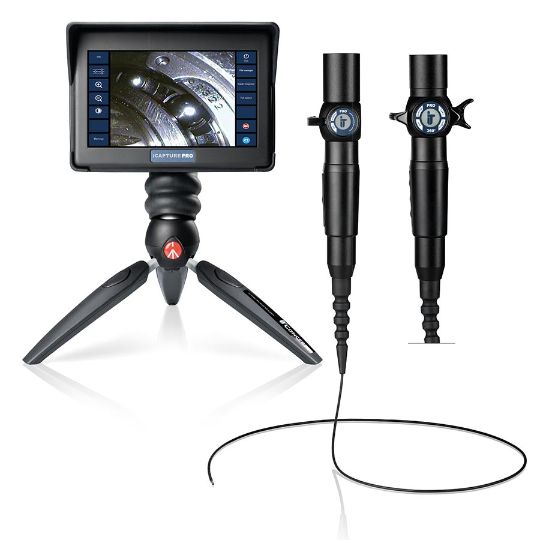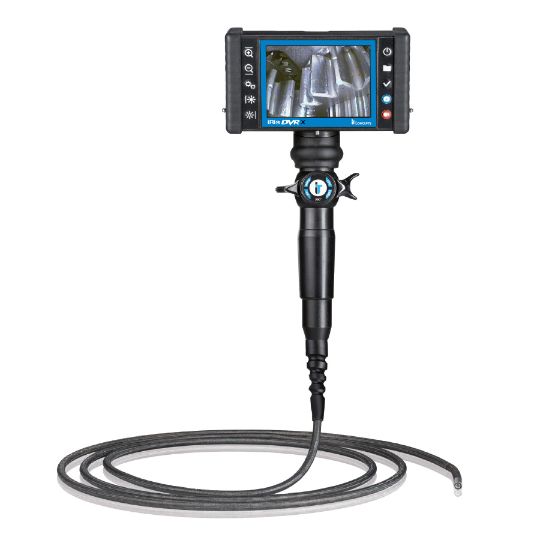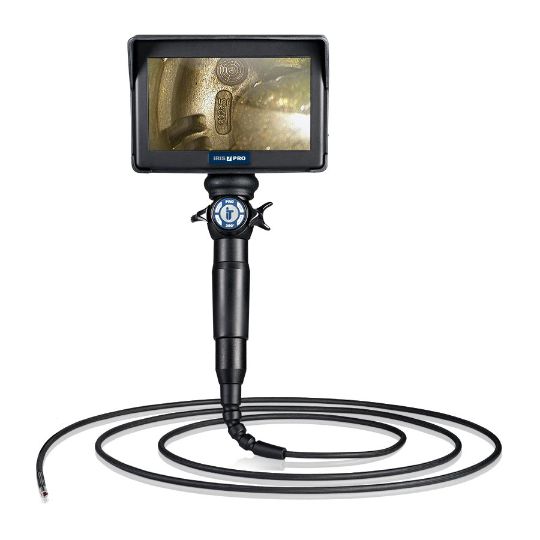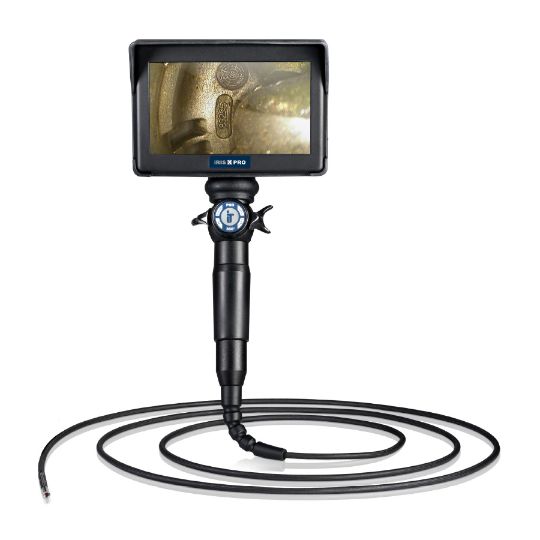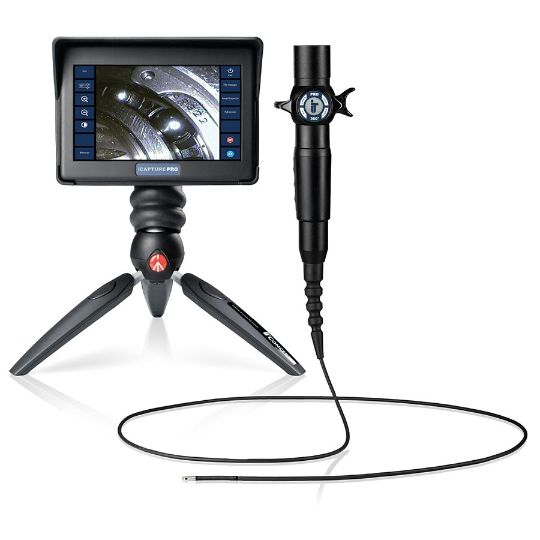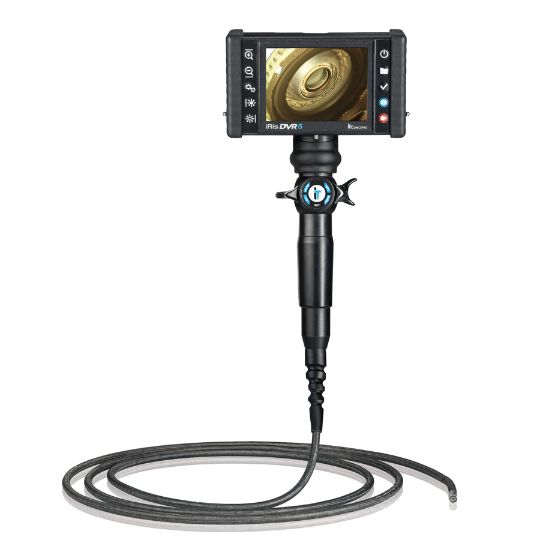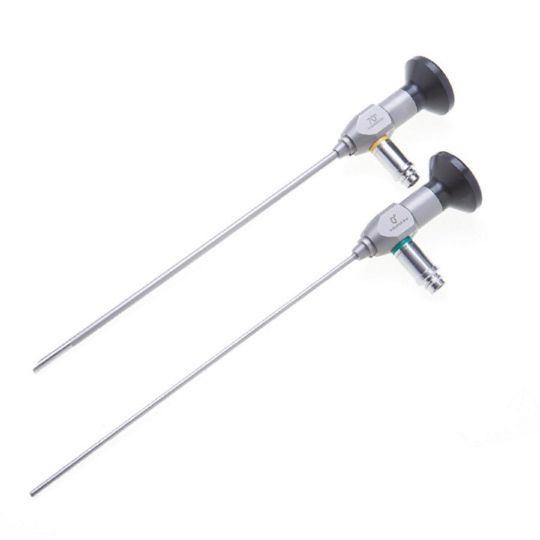Borescope Aircraft Inspection
Aircraft Borescope Inspection
Borescope Inspection Challenges in Aviation
Airplanes and Helicopters Borescope Inspections

Borescope Aircraft Inspection
Aircraft Borescope Inspection - Helicopter and Airplane Borescopes
Borescopes (also referred to as borescope cameras, boroscopes, industrial endoscopes, videoscopes, video scopes or even inspection cameras) are used in aviation industry for diverse types of aircraft to monitor aircraft engines, brakes, landing gear, areas behind instrument panel, fuselage and wings inner components. Such parts of the aircraft are extremely hard to be thoroughly monitored without unassembling them. Aircraft borescopes give magnified images, recorded videos, and the best inside look to access such locations of the aircraft. Aircraft borescopes come in a wide range of probe diameters, lengths, and features.
A borescope inspection provides a thorough examination of tiny hard to reach spaces that can’t be observed via traditional flashlight and mirrors inspection. Industrial aircraft borescopes are designed to make sure not to damage any part during the inspection process of aircraft component while being fully adjustable and flexible to provide examination and access to tight inspection areas.
The aircraft engines flaws that are detected by borescope inspection:
- Cracks caused by thermal cycling, unintended vibrations and overheating, mechanical fatigue
- Accumulation of debris particles, FOD (Foreign Object Damage or Foreign Object Debris), residues, corrosion, wear
- Other indicating signs of an issue in aircraft engine components
In the borescope aviation inspection, the following areas are targeted:
- Compressor. The access for a borescope inspection is usually through a bleed port, the air inlet, or specially designed borescope port. The last stages can be accessed through an ignitor port. The trailing and leading edges of guide vanes and compressor blades are thoroughly checked for any erosion or FOD.
- Combustion Chamber. Access is usually through the ignitor port. The combustion chambers are checked for all cracks and misalignments. Fuel nozzles, louvers and other parts are specially analyzed for any sort of excessive cracking, distortion, and coking.
- Turbine Section. Access is usually from the ignitor port or specifically designed borescope port. In the turbine’s first stage, the guide vanes and stationary nozzles, both are thoroughly checked and monitored for cracking and burning, FOD, erosion, pitting, and sulfidation. Then the second stage turbine blades are checked for rivet cracking and shifting.
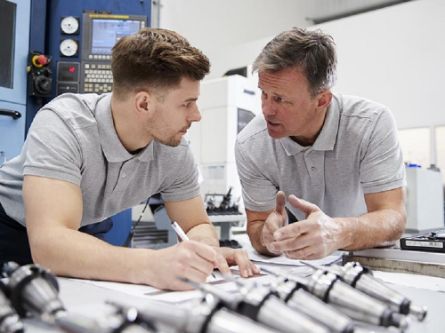
Certain challenges are to be faced during a borescope inspection. Some common types of challenges are the following:
- Highest quality of borescope inspection agents must be ensured
- The borescope inspection agents must have the following training capacities: familiar with the safety knowledge of aircraft borescope inspection; master specialized knowledge
- The management system of the aircraft borescope must be properly designed, arranged, applied, and reviewed
- There is always a high chance of human error in any type of human-related work, so the human risk factor must be minimized in the borescope aviation inspection so that any kind of fault is not neglected
Aircraft borescopes have a variety of different uses. Some of them are the following:
- These borescopes are used to identify defects and irregularities with NDT (Nondestructive Testing) techniques
- Aircraft borescopes are used for the general inspection of engines, brakes, wings, and other inaccessible parts of the aircraft
- These borescopes can be used to record videos for a full inspection of the aircraft before declaring it clear for a takeoff
- Aircraft borescopes are used to provide the solution for any technical fault present in the aircraft, which may cause damage to the other parts without being noticed
Typically, borescopes have different uses in aeroderivative industrial gas turbines, steam turbines, diesel engines, and automotive and truck engines. But aircraft borescopes are specially made borescopes for a quick, targeted, or a full inspection of the hidden parts of the aircraft, like aircraft engines, brakes, and fuselage and wings interior components of the aircraft. Therefore, any defects or imperfections can timely be detected and eliminated from the aircraft set up with the minimum amount of effort.
Individually configured for your needs
Recommended Products for Aviation Borescope Inspection
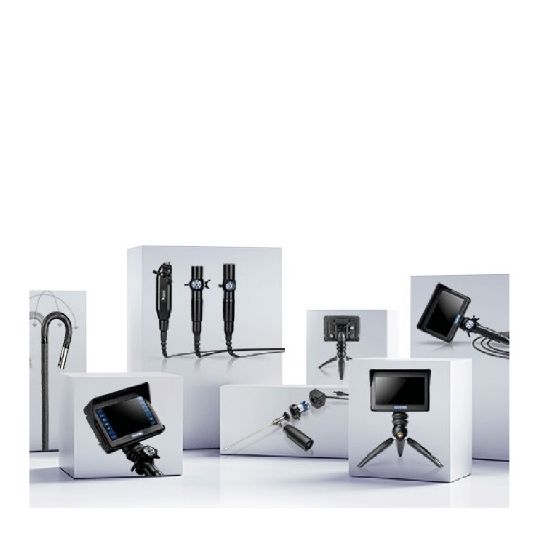
All Products
Rigid Borescopes
Probe Diameter: 1.9 - 9mm
Probe Length: 1.5 - 7.5m,
up to 10 - 20m (custom configurations)

